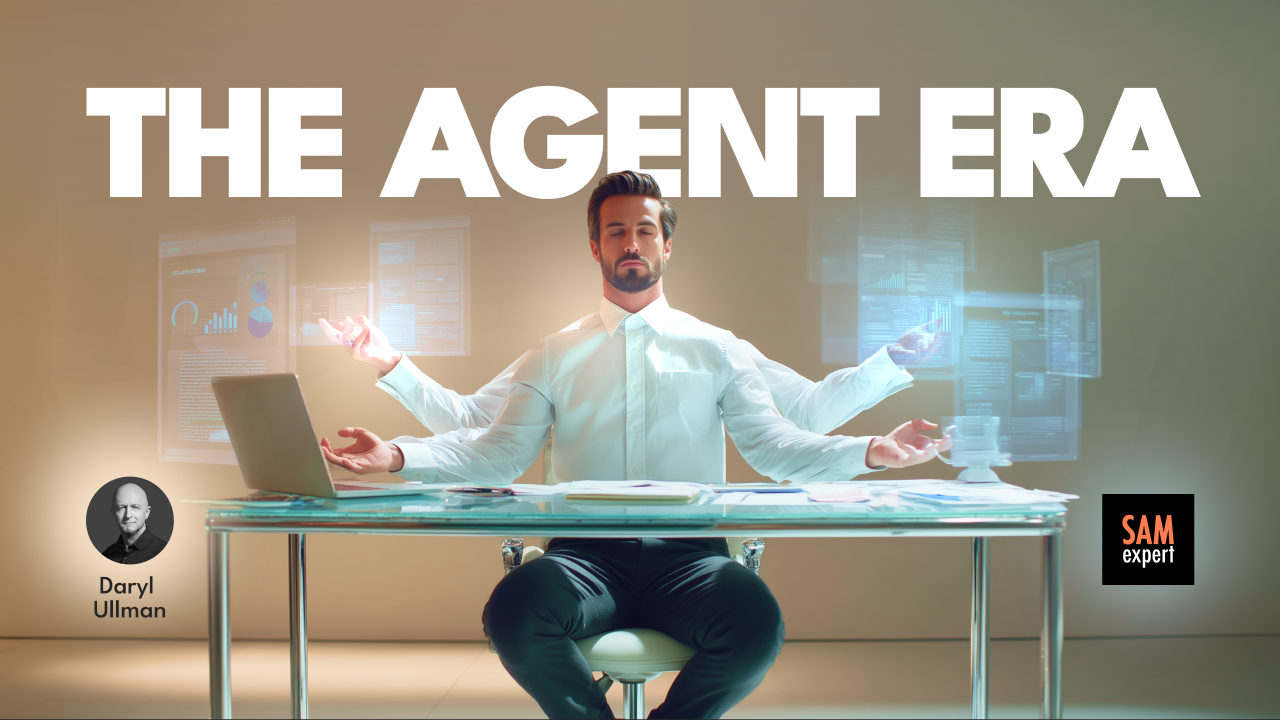Summary
AI is evolving from tools that merely assist users to intelligent systems that act on their behalf. Welcome to Agentive AI, a class of systems designed not just to suggest or support but to act. Unlike traditional AI, which requires direct prompts or approval at each step, Agentive AI works proactively within defined boundaries to complete complex, multi-step tasks with minimal human input.
This marks a turning point in how we think about productivity: from users interacting with software to users collaborating with autonomous agents that operate across software environments. And no company is leaning harder into this transformation than Microsoft.

Copilot as the UI for the Agent Era
Central to Microsoft’s Agentive AI strategy is a bold vision articulated by CEO Satya Nadella:
“As AI becomes more capable and agentic, Copilot becomes the UI for every user and every business process.”
Nadella sees this change as an improvement to existing tools and a comprehensive redesign of the digital work experience.. In his words, we are moving from siloed applications to an "intent-based orchestration layer", a new interface paradigm where users express goals and the AI executes them across applications, data sources, and communication channels.
Microsoft's Copilot is more than a branding exercise—it embodies this vision. What began as embedded AI assistance in apps like Word and Excel is now evolving into an orchestrated system of autonomous agents that perform, coordinate, and learn from actions across the enterprise stack.
Copilot is evolving from a sidebar assistant to an orchestrated system of autonomous agents.
From Embedded Features to Autonomous Agents
The evolution of Microsoft Copilot from a helpful sidebar to a proactive agent is already underway:
Copilot in Microsoft 365 helps generate documents, summarise emails, and automate workflows.
Copilot Studio allows enterprises to build custom AI agents to take action in legacy environments without APIs, using UI-based automation akin to AI-powered RPA.
Microsoft’s AutoGen framework enables AI agents to collaborate, creating task-specific agent teams to interact and negotiate complex outputs.
Internally, Microsoft has started deploying these agents in its operations, handling document drafting, summarising meetings, and even assisting engineering teams in writing and debugging code.
From SaaS to Agent-as-a-Service
This transformation goes beyond just product features; it represents a significant shift in Microsoft's business model. Under the leadership of Satya Nadella, Microsoft is positioning itself not only as a software provider but also as a platform for intelligent agents. Essentially, Software-as-a-Service (SaaS) is evolving into Agent-as-a-Service (AaaS).
Agent-as-a-Service replaces traditional SaaS in Microsoft’s new licensing and sales motions.
This strategic pivot has several implications:
New Licensing Models: Microsoft is introducing bundled offerings that combine M365 E5, Copilot, and agent tooling, incentivised by higher rebates to partners and baked into renewal conversations.
Channel Pressure: Resellers and Microsoft's partner ecosystem are being pushed to include Copilot in every proposal. This leads to an "AI-first" selling motion, even in cases where the customer's ROI remains unclear.
Customer Implications: Enterprise customers are absorbing the cost burden of this shift, with increasing pressure to justify AI expenditures without always seeing a tangible business impact. Many organisations—particularly those that purchased Copilot out of FOMO (fear of missing out)—are now reevaluating ROI and usage patterns.
🖐 Gain insights into pricing strategies. Discover how: Pricing Research and Pricing Metrics
Impact on Software Development
One of the most precise signals of the agentic shift is how Microsoft applies AI to its engineering workflows.
AI-Generated Code: Satya Nadella recently disclosed that AI generates between 20% and 30% of all code in specific Microsoft development projects. This isn't limited to boilerplate scripts. Copilot actively contributes to production-grade code.
Future Projections: According to Microsoft CTO Kevin Scott, the trend is accelerating rapidly. He estimates that by 2030, up to 95% of code could be AI-generated, fundamentally reshaping the role of software engineers. Rather than writing code line-by-line, developers will act more like architects, designing, validating, and refining AI-generated structures.
Up to 95% of software code could be AI-generated by 2030, reshaping developer roles.
This shift will have enormous implications for software building, licensing models, developer training, and innovation velocity across industries.
The Long Game
Microsoft's ambitions in Agentive AI extend well beyond productivity. With the hiring of Mustafa Suleyman (co-founder of DeepMind and Inflecion AI) as CEO of Microsoft AI, the company is signalling its intent to build personal AI companions—agents that execute tasks and develop persistent, adaptive relationships with their users.
These companions will learn from individual behaviours, preferences, and contexts to deliver personalised, anticipatory service—essentially becoming digital extensions of the user. This will bring ethical, regulatory, and technical challenges, but it also has the potential to redefine what enterprise software looks like.
What This Means for the Enterprise
From a negotiation and enterprise IT perspective, Microsoft's agentive roadmap introduces opportunity and risk.
Opportunities:
Improved automation, productivity, and knowledge work acceleration.
Consolidated platforms that can simplify IT management.
Strategic alignment with Microsoft's AI vision can sometimes unlock funding, engineering support, or better pricing.
Risks:
Cost creep from layered licensing models that include Copilot and agent tools.
Dependence on Microsoft’s proprietary ecosystem and lack of interoperability.
Pressure to adopt unproven solutions due to roadmap alignment rather than actual business need.
A Vision Still in Formation
Satya Nadella's vision of Agentive AI positions Microsoft as the platform of choice for enterprises seeking to automate at scale. But as with every technological inflexion point, actual value will depend on execution, governance, and measurable business impact, not just vision and marketing.
The key for procurement leaders, CIOs, and negotiators will be balancing strategic alignment with Microsoft's future direction while maintaining control over cost, interoperability, and value realisation. The agent era may be here, but whether it delivers on its promise will depend on how intelligently it is adopted and governed.